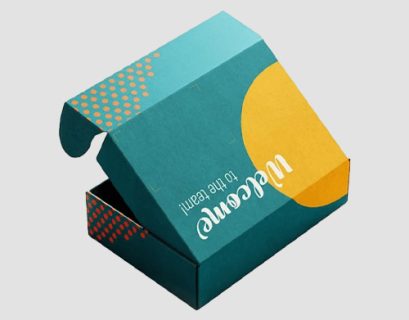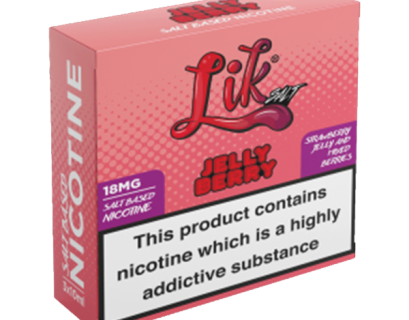The unboxing experience has evolved from a mere routine of opening a package to a significant part of the customer journey. As e-commerce continues to grow, the physical interaction customers have with your brand often happens at the unboxing moment. This makes it crucial for businesses to invest in custom product packaging that not only protects the product but also creates a memorable experience. In this article, we’ll explore how custom product boxes can transform the unboxing process, enhance brand perception, and contribute to customer loyalty.
The Importance of Unboxing Experiences
The unboxing experience is a customer’s first physical interaction with your product, and first impressions matter. This experience can set the tone for how customers perceive your brand and influence their satisfaction. Studies show that a positive unboxing experience can increase customer satisfaction and even lead to repeat purchases. It’s not just about the product inside but how it’s presented that can create a lasting impact.
When customers unbox a product, they’re not just looking for the item they purchased; they’re anticipating an experience. This expectation can be a critical factor in determining whether they’ll become loyal to your brand or simply move on to another option. Unboxing is also a powerful tool for social media engagement. Customers often share their unboxing experiences online, which can serve as free advertising for your brand. A well-designed custom product packaging can turn an ordinary moment into an Instagram-worthy event, further amplifying your brand’s reach.
How Custom Product Packaging Enhances Unboxing
Custom product boxes plays a pivotal role in elevating the unboxing experience. Unlike generic packaging, custom packaging allows brands to express their identity, tell their story, and create a connection with their customers. Every element of the packaging—from the materials used to the colors and textures—can contribute to a unique and memorable unboxing experience.
Custom packaging offers endless possibilities for creativity. Brands can choose materials that align with their values, such as eco-friendly options, and design packaging that reflects their brand identity. The use of distinctive colors, patterns, and logos can make the packaging instantly recognizable, reinforcing brand awareness. Moreover, custom packaging can include thoughtful touches like personalized notes, which can make customers feel valued and appreciated.
For example, consider a luxury brand that uses high-quality, textured paper for its packaging, paired with a satin ribbon and a custom wax seal. The attention to detail not only enhances the unboxing experience but also reinforces the brand’s positioning as a premium product. On the other hand, a brand that emphasizes sustainability might use recycled materials and minimalist designs to communicate its commitment to the environment. In both cases, the packaging serves as a silent ambassador of the brand’s values and mission.
Key Elements of Effective Custom Product Packaging
To create an unforgettable unboxing experience, it’s essential to focus on several key elements of custom product packaging. These elements not only enhance the visual appeal of the packaging but also ensure that it is functional, sustainable, and aligned with your brand’s message.
Visual Appeal: The first thing customers notice about your packaging is its visual appeal. This includes the colors, logos, and overall design of the packaging. Bright, bold colors can grab attention, while more subdued tones might convey elegance and sophistication. The design should be consistent with your brand’s identity and resonate with your target audience. For instance, a brand targeting a younger demographic might opt for vibrant colors and playful designs, while a brand aimed at professionals might choose a more refined and minimalist approach.
Functional Design: While aesthetics are important, the functionality of the packaging is equally crucial. The packaging should be easy to open, protect the product during transit, and be designed with the customer in mind. Functional design can also include features like resealable packaging or compartments that can be reused. Moreover, sustainable packaging options are increasingly popular, as they reflect a brand’s commitment to environmental responsibility. Brands that prioritize eco-friendly packaging not only reduce their carbon footprint but also appeal to environmentally conscious consumers.
Brand Storytelling: Packaging offers a unique opportunity to tell your brand’s story. Whether it’s through the use of specific colors, materials, or design elements, your packaging should communicate your brand’s values and mission. For example, a brand that prides itself on craftsmanship might include details about the artisans who created the product, while a brand focused on sustainability might highlight its commitment to using recycled materials. By incorporating storytelling into your packaging, you create a deeper connection with your customers and make the unboxing experience more meaningful.
Case Studies: Brands That Excel in Unboxing Experiences
Many brands have mastered the art of creating unforgettable unboxing experiences through custom product packaging. These brands understand that packaging is not just a means to deliver a product but a powerful tool for enhancing customer engagement and loyalty.
Apple: Apple is a prime example of a brand that excels in creating memorable unboxing experiences. The sleek, minimalist design of Apple’s packaging reflects the brand’s emphasis on innovation and simplicity. Every aspect of the packaging, from the precise fit of the box to the smooth opening experience, is designed to create a sense of anticipation and excitement. The packaging is also designed to be reusable, allowing customers to store their devices safely. Apple’s attention to detail in packaging reinforces its brand identity and leaves a lasting impression on customers.
Glossier: Glossier, a beauty brand, is another example of a company that has successfully leveraged custom product packaging to create a memorable unboxing experience. Glossier’s packaging is known for its pink bubble wrap pouches and minimalistic design, which resonate with its target audience of young, fashion-forward consumers. The brand also includes stickers and personalized notes in its packaging, adding a personal touch that delights customers. Glossier’s packaging not only protects the product but also enhances the overall customer experience, making it a key part of the brand’s marketing strategy.
Birchbox: Birchbox, a subscription box service, has built its brand around the unboxing experience. Each month, subscribers receive a box filled with curated beauty products, carefully packaged in a stylish box. The design of the box changes monthly, keeping the experience fresh and exciting for customers. Birchbox also includes informative cards about the products inside, adding value to the unboxing experience. By focusing on the presentation and discovery aspect of unboxing, Birchbox has created a loyal customer base that eagerly anticipates their monthly deliveries.
How to Create Your Own Unforgettable Unboxing Experience
Creating an unforgettable unboxing experience involves thoughtful planning and execution. Here’s a step-by-step guide to help you design custom product packaging that delights your customers and reinforces your brand.
Step 1: Understand Your Brand and Audience: The first step in creating custom packaging is to have a clear understanding of your brand identity and target audience. Your packaging should reflect your brand’s values and appeal to your customers’ preferences. Conduct market research to understand what resonates with your audience and how your packaging can stand out from competitors.
Step 2: Choose the Right Materials: The materials you choose for your packaging play a significant role in the unboxing experience. Consider the durability, sustainability, and tactile qualities of the materials. For example, using high-quality, textured paper can enhance the luxury feel of your packaging, while using recycled materials can communicate your commitment to sustainability. Ensure that the materials align with your brand’s image and message.
Step 3: Focus on Design Elements: The design of your packaging should be visually appealing and consistent with your brand’s identity. Consider elements like color, typography, and logo placement. The design should also be functional, ensuring that the packaging protects the product and is easy to open. Experiment with different design options to find the one that best represents your brand and resonates with your audience.
Step 4: Incorporate Personalization: Adding a personal touch to your packaging can make the unboxing experience more memorable. This could be in the form of a handwritten note, a personalized message, or even a small freebie. Personalization shows that you care about your customers and are willing to go the extra mile to make them feel special.
Step 5: Test and Refine: Before finalizing your packaging design, test it with a sample group of customers. Gather feedback on the design, functionality, and overall unboxing experience. Use this feedback to make any necessary adjustments to your packaging. The goal is to create a packaging design that not only meets your customers’ expectations but exceeds them. More
The Role of Technology in Custom Product Packaging
Technology is playing an increasingly important role in the evolution of custom product packaging. Brands are leveraging the latest technological advancements to create interactive and engaging unboxing experiences.
Augmented Reality (AR): AR is one of the most exciting innovations in packaging. By integrating AR into packaging, brands can create immersive experiences that go beyond the physical product. For example, customers can scan a QR code on the packaging to access interactive content, such as tutorials, product information, or even games. This not only enhances the unboxing experience but also adds value to the product and increases customer engagement.
Smart Packaging: Smart packaging involves the use of embedded technology, such as NFC (Near Field Communication) tags or RFID (Radio Frequency Identification) chips, to provide additional information about the product. This technology can be used to track the product’s journey, ensure authenticity, or provide personalized recommendations. Smart packaging can also enhance the unboxing experience by delivering real-time updates or exclusive offers to customers.
Sustainability and Innovation: Technology is also driving innovation in sustainable packaging. Brands are exploring new materials and processes that reduce waste and minimize environmental impact. For example, biodegradable packaging made from plant-based materials is becoming increasingly popular. Additionally, advancements in printing technology allow for more precise and efficient use of materials, reducing waste and lowering production costs.
Benefits of Investing in Custom Product Packaging
Investing in custom product packaging offers numerous benefits that go beyond protecting the product. These benefits can have a significant impact on your brand’s reputation, customer loyalty, and overall business success.
Enhanced Brand Perception: Custom packaging allows you to present your product in a way that reflects your brand’s identity and values. When customers receive a product in well-designed packaging, it reinforces their perception of your brand as professional and trustworthy. This can lead to increased brand loyalty and positive word-of-mouth marketing.
Increased Customer Loyalty: A memorable unboxing experience can create an emotional connection with your customers. When customers feel valued and appreciated, they are more likely to become repeat buyers. Custom packaging that includes personalized elements or thoughtful touches can strengthen this connection and foster long-term loyalty.
Higher Perceived Value: Custom packaging can increase the perceived value of your product. When a product is presented in premium packaging, customers are more likely to perceive it as high-quality and worth the price. This can justify higher price points and improve your profit margins.
Competitive Advantage: In a crowded market, custom packaging can help your product stand out from the competition. Unique packaging design and innovative features can attract attention and make your product more memorable. This can give you a competitive edge and increase your market share.
Social Media Amplification: As mentioned earlier, a well-executed unboxing experience can generate organic social media content. Customers are more likely to share their unboxing experiences online if the packaging is visually appealing and unique. This user-generated content can amplify your brand’s reach and attract new customers.
Conclusion:
In today’s competitive market, custom product packaging is more than just a protective layer; it’s a powerful marketing tool that can enhance the unboxing experience and create lasting customer relationships. By investing in custom packaging, brands can differentiate themselves, increase customer loyalty, and ultimately drive business success. As technology continues to evolve, the possibilities for creating unforgettable unboxing experiences are endless. Whether through innovative design, sustainable materials, or interactive elements, custom product packaging can turn an ordinary unboxing moment into an extraordinary brand experience. Visit customproductpackaging.com for more info.




















